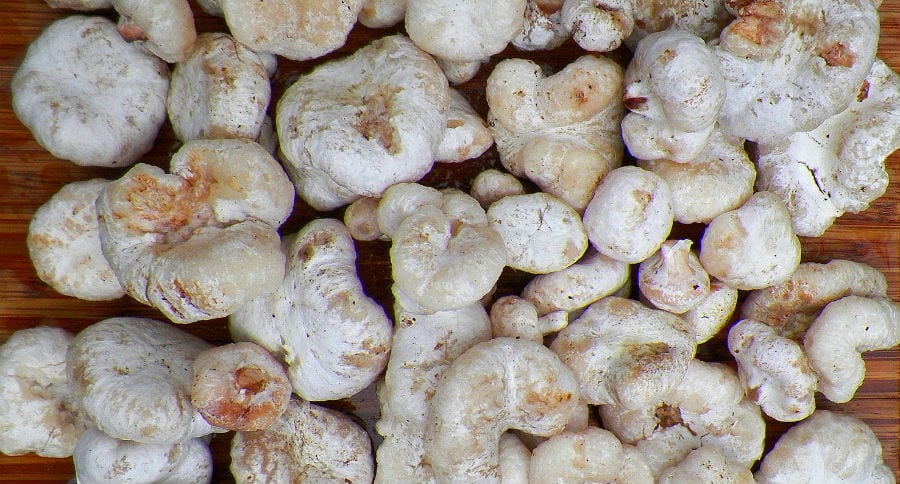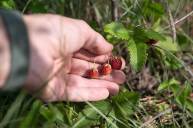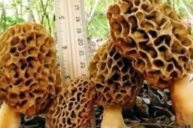It's the time of year when autumn mushroom hunters take to the woods in search of fungi deliciousness. Entoloma abortivum should be on your list.
Entoloma abortivum, also known as aborted entoloma or, colloquially, "pig snoots," are some of the more confusing edible mushrooms around.
It isn't hard to properly identify one of these weird little malformed blobs of white deliciousness. What's confusing is the fungi's biology.
From what I've gathered in my studies, there's been a good deal of uncertainty, hypothesizing and revision over the years concerning the hows and whats of aborted entoloma growth and formation. At one time, the common wisdom was that Entoloma abortivum was simply a malformed "aberration" of the entoloma mushroom, kind of the mushroom equivalent of a two-headed snake.
Then, in 1974, a paper by a fellow named Roy Watling presented evidence that showed these mushrooms contained hyphae (mycelium filaments) of another fungi, Armillaria melea (honey mushrooms). His work convinced the fungi world that the Armillaria species was somehow parasitizing the unaborted form of the Entoloma species, thus creating a funky Entoloma abortivum aborted-form mutation.

An aborted entoloma - or "pig snoot" - on the ground.
New theories
But wait, there's more! In recent years, the theory has reversed the relationship, as new evidence from fungi experts Tom Volk, Dan Lindner and Harry Burdsall Jr. (all from Wisconsin) supports the hypothesis that it is Entoloma that is parasitizing Armillaria, rather than the other way around. As you might imagine, online mushroom forums are full of lively chatter and debate on the subject of what happened to what and in what order.
Volk also recommends changing the common name of the mushroom from aborted entoloma to aborted amillaria. I'm kind of partial to our casual "pig snoot" terminology, as that's the way I first heard someone refer to them. Volk also shares that the Mexican name for the mushroom is the colorful and slightly tongue twisting Totlcoxcatl, which means "turkey wattle." I love that one, too.
A strange mutation
All of this confusion on just what the heck this thing really is makes it the CatDog of mushrooms in my book. CatDog, for those of you too young to remember, was a Nickelodeon cartoon featuring the characters Cat and Dog, a conjoined twin hybrid of a cat and a dog who share the same body with no tail or hind legs. This weird mutation made for some entertaining conflicts between the two.
So, what does all of this scientific mushroom mystery, theater and early-2000s cartoons have to do with your pursuit of tasty pig snoots? Maybe nothing, but it's certainly interesting, and ought to enhance our appreciation for this seasonal delicacy.
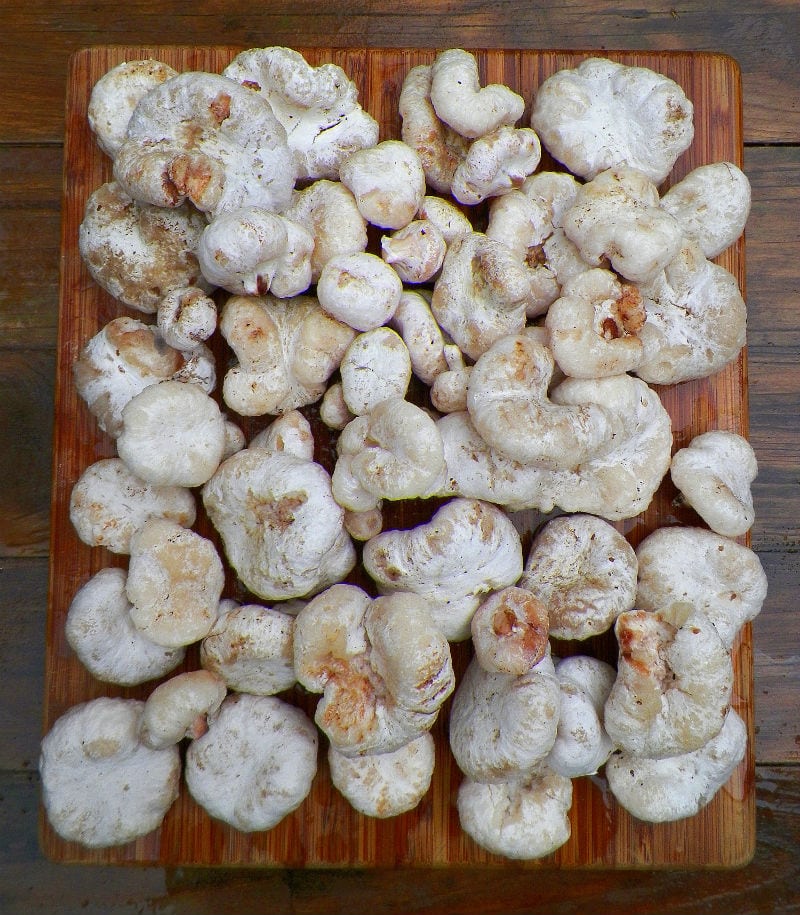
A decent haul of ground prunes.
Identifying pig snoots
Be sure to thoroughly study and check field guides before consuming any wild mushroom. But properly identifying pig snoots is pretty simple, as there are no mushrooms that it could reasonably be mistaken for. Look for these characteristics:
- White body, perhaps with bits of gray or dull salmon, particularly in the interior.
- Texture of the fruiting body is firm to spongy, pithy, with no discernible directional grain.
- Absence of gills.
- Knobby and misshapen in appearance (also descriptively called "ground prunes" in some locales).
- No discernible stem, or at best, a very abbreviated stem.
- Aroma is somewhat mealy and earthy.
- Found in the dirt or under leaf litter at the base of both living and dead trees and stumps in hardwood forests, as well as on open ground where the soil is rich.
- Fruitbodies appear in autumn, specifically September and October here in Wisconsin.
Note: If you're able to get a spore print from abortive entoloma, it'll be pink. But these irregular globs are quite different from most decurrent gilled mushrooms.

Note the very short, woody stems on the central mushrooms. Other aborted entoloma may not even display this much visible stem.
Preparing
Pig snoots are best prepared soon after harvesting, Clean with a brush and a quick rinse in cold water. They can host a few tiny visitors, especially on their undersides. Be sure to be thorough in your cleaning and don't be afraid to cut off any mushy or undesirable spots. Once clean and dried with a soft towel, I usually space them out on a wire rack to allow them to dry and firm up a little bit more. I've had little success, however, with drying them for preservation. They generally dry down to virtually nothing.
I prefer to fry or saute pig snoots fairly quickly at a little higher heat, in butter or bacon grease. They're rather spongy and will soak up any oil, butter or bacon fat in the pan. A pinch of salt and pepper, and maybe an even more stingy pinch of ground nutmeg is good for seasoning. Slice them to around a 1/4 inch in thickness and cook until golden brown, and that's it.
You can then add them to whatever dish you want or just eat them as they are. I find it best to cook them before adding to a dish, as opposed to adding them raw and cooking in the dish itself. I like my pig snoots with eggs, rice, noodles and on sandwiches and pizzas.
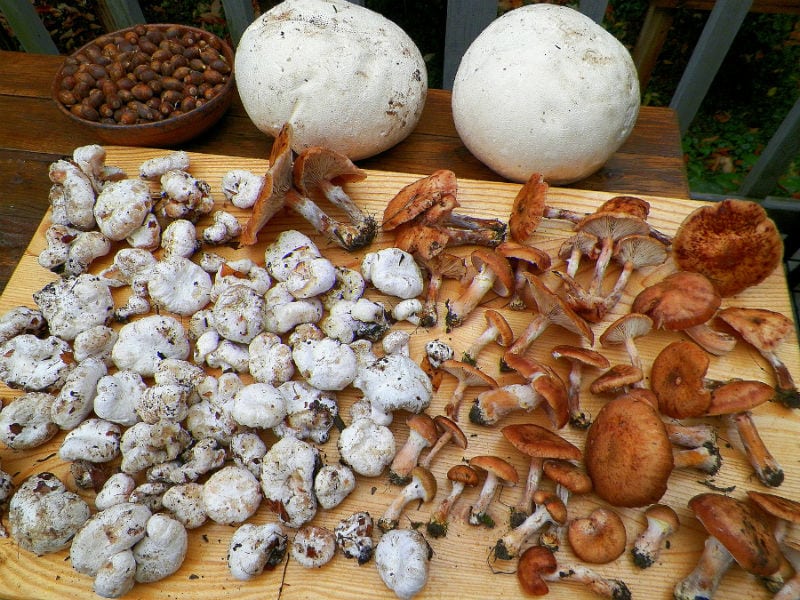
A nice harvest of pig snoots, honey mushrooms, puffballs and acorns.
Aborted Entoloma, Aborted Armillarias, Pig Snoots, Ground Prunes, Totlcoxcatl or whatever you choose to call them, these amorphous fungi are always fun to hunt. Every one is unique and very good to eat.
Learn more
You can read Tom Volk's account of the developments associated with Aborted Armillaria and view more images at Tom Volk's Fungi. He also shares a link to the paper he, Lindner and Burdsall presented, which details their research into the relationship between Entoloma, Armillaria and their aborted "offspring."
Like what you see here? Experience more articles and photographs about the great outdoors at the facebook page, Stumpjack Outdoors.
NEXT: TOP 10 TIPS FOR FINDING MOREL MUSHROOMS
WATCH
